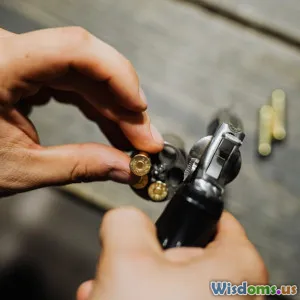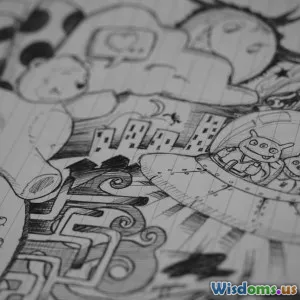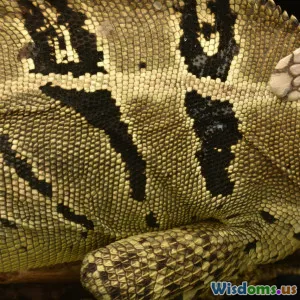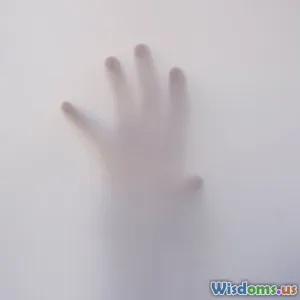
Ghost Hunting Tools Explained and How Effective Are They
8 min read Explore the world of ghost hunting tools, their functions, and true effectiveness in uncovering paranormal activity. (0 Reviews)
Ghost Hunting Tools Explained and How Effective Are They
The allure of the paranormal has captivated human imagination for centuries, leading many to seek tangible proof of spirits beyond our perception. Ghost hunting — the pursuit of detecting and sometimes communicating with supernatural entities — has become a popular hobby and field of study for enthusiasts worldwide. But how do ghost hunters track the invisible? What tools are used, and, crucially, how effective are they?
The Spectrum of Ghost Hunting Gear
Ghost hunting is built on the principle of identifying anomalies that could suggest paranormal presence. Across this quest, several specialized tools have been developed or adapted for the purpose. These instruments range from gadgets testing electrical fields to devices capturing unexplained voices. Let’s look closely at the most common equipment:
Electromagnetic Field (EMF) Meters
Originally designed to detect fluctuations in electromagnetic fields for electrical engineering purposes, EMF meters are the most iconic tool in ghost hunting kits.
How They Work: EMFs are naturally present, produced by electricity supply lines and many electronic devices. The theory behind ghost hunting posits that spirits might disrupt or generate EMFs, making sudden spikes a potential sign of paranormal activity.
Effectiveness: While EMF meters can alert investigators to unusual electromagnetic spikes, science notes that such fluctuations often have mundane explanations like faulty wiring or cell phones. Paranormal researchers like Ed and Lorraine Warren famously used EMF detectors with anecdotal success, but controlled studies show no definitive paranormal correlations. Hence, reliability is debated.
Digital Voice Recorders (EVP Recorders)
Electronic Voice Phenomena (EVP) involves recordings of mysterious voices or sounds not audible during active investigation.
How They Work: Digital recorders capture subtle background noises. When investigators play back recordings, they might hear voices or sounds interpreted as ghostly communication.
Effectiveness: EVPs intrigue skeptics and believers alike. Scientific scrutiny often reveals pareidolia— the brain’s tendency to find familiar patterns in random noise — as a key factor. However, sometimes undiscovered audio features do provide eerie results, making EVPs a compelling but inconclusive tool.
Infrared and Full-Spectrum Cameras
Visual evidence is powerful in paranormal pursuits.
How They Work: These cameras capture light beyond regular human vision — infrared picks up heat signatures, while full-spectrum cameras see ultraviolet light.
Effectiveness: Infrared cameras can detect cold spots, a common theme in reported hauntings. However, factors like drafts, malfunctioning HVAC systems, or environmental conditions can create misleading thermal images. Despite occasional ghostly footage featured on TV shows, photographic evidence usually lacks definitive proof, often explained by lens flares, reflections, or digital noise.
Motion Sensors and Laser Grids
To confirm physical presence or movement, hunters deploy motion sensors and laser grids.
How They Work: Motion sensors detect physical movement within a defined space, while laser grids project a network of laser beams; breaking the grid would indicate invisible entities crossing.
Effectiveness: These sensors are highly reliable at detecting physical intrusions but cannot differentiate ghosts from humans or animals. Ghost hunters often pair sensor data with other evidence.
Thermal Imaging Cameras
Thermal cameras visualize heat variations, mapping temperature gradients that human eyes cannot see.
How They Work: By detecting infrared radiation, these cameras reveal heat signatures sometimes linked to supernatural phenomena.
Effectiveness: Thermal fluctuations can indicate environmental changes but don’t necessarily confirm hauntings. Environmental conditions (e.g., cold drafts) often cause similar thermal anomalies.
Spirit Boxes and Ovilus Devices
Designed to facilitate spirit communication.
How They Work: Spirit boxes scan rapidly through radio frequencies, hoping spirits manipulate fragments of sound to create messages. Ovilus devices use preset words assembled when manipulated by environmental changes.
Effectiveness: Critics cite confirmation bias — listeners' interpretation — as a significant issue. While some investigators find value in these tools for spontaneous interactions, there is little scientific validation.
Real-World Insights and Skepticism
Numerous paranormal teams like The Atlantic Paranormal Society (TAPS) and individual investigators swear by the utility of these instruments. For instance, during investigations at historic locations such as the Myrtles Plantation or Eastern State Penitentiary, EMF meters and EVP recorders have formed core aspects of collected data.
Yet, scientists remain skeptical. The primary critique lies in the lack of controlled scientific environments, making results anecdotal at best. Psychologists point to cognitive biases and environmental misinterpretations as significant factors influencing perceived “evidence.”
A 2019 study published in the Journal of Parapsychology evaluated EVP recordings and found no conclusive proof that voices recorded were anything but auditory pareidolia or interference.
Using the Tools Wisely: Best Practices for Enthusiasts
- Combine Data Streams: Relying on one tool can be misleading. Cross-reference EMF anomalies with audio and visual data.
- Control Environmental Factors: Schedule investigations in well-understood environments; eliminate known electronic devices and test environmental conditions beforehand.
- Maintain Skepticism and Critical Thinking: Question and analyze all findings rigorously.
- Document Thoroughly: Keep detailed logs of equipment settings, environmental conditions, and observations.
Conclusion
Ghost hunting tools provide fascinating approaches to exploring the unseen; they blend technology with age-old mystery. While popular culture heralds their capabilities, scientific validation remains elusive. Most tools successfully detect environmental anomalies but cannot definitively prove supernatural presence.
However, this does not diminish their appeal or the excitement they bring to investigations. The effectiveness lies not only in capturing evidence but in stimulating curiosity, promoting critical thinking, and building community among those intrigued by the supernatural edge of reality.
Whether born from genuine phenomena or misunderstood science, ghost hunting equipment continues to evolve, beckoning adventurous minds into the shadowy crossroads of faith and inquiry.
Ready to unravel more mysteries or embark on your own paranormal exploration? Use these tools with an open but analytical mindset and see what the unseen might reveal.
Rate the Post
User Reviews
Popular Posts




















